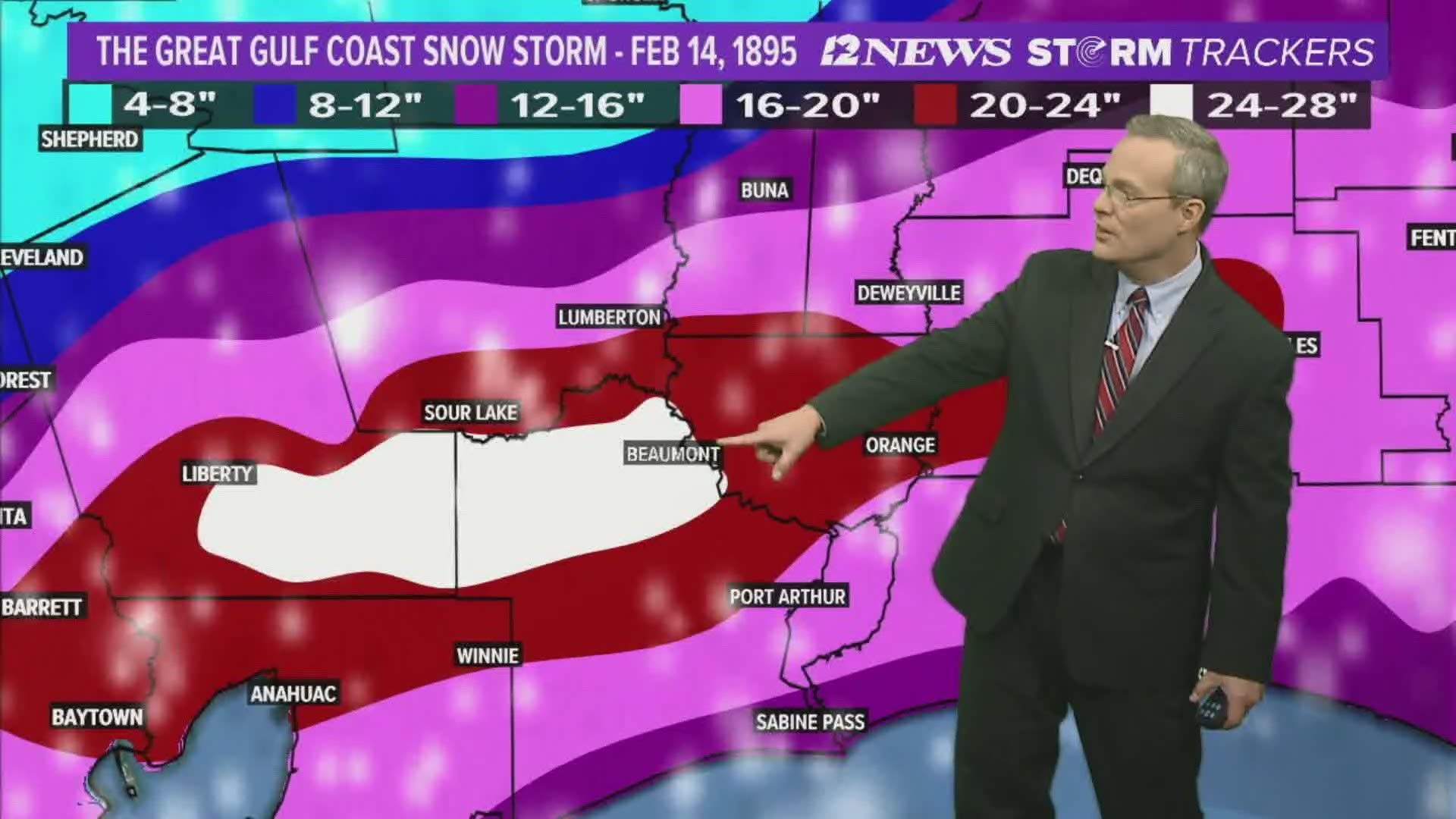BEAUMONT, Texas — While certain areas across the nation may be used snow, it is not a common weather event in Southeast Texas.
Some Southeast Texans may remember when 1 to 5 inches fell on December 11, 2008, or the 4 plus inches that fell on February 12-13th in 1960.
(Editor's note: The above video is from a February 2020 newscast about the snow storm.)
However, Tuesday marks the 128th anniversary of the Great Gulf Coast Snowstorm across Texas and Louisiana. This weather event produced the greatest amount of snowfall over Southeast Texas ever to be recorded since the area was settled.
The snow was so heavy that trains couldn’t plow through the snow and snowshoes had to be used in the city.

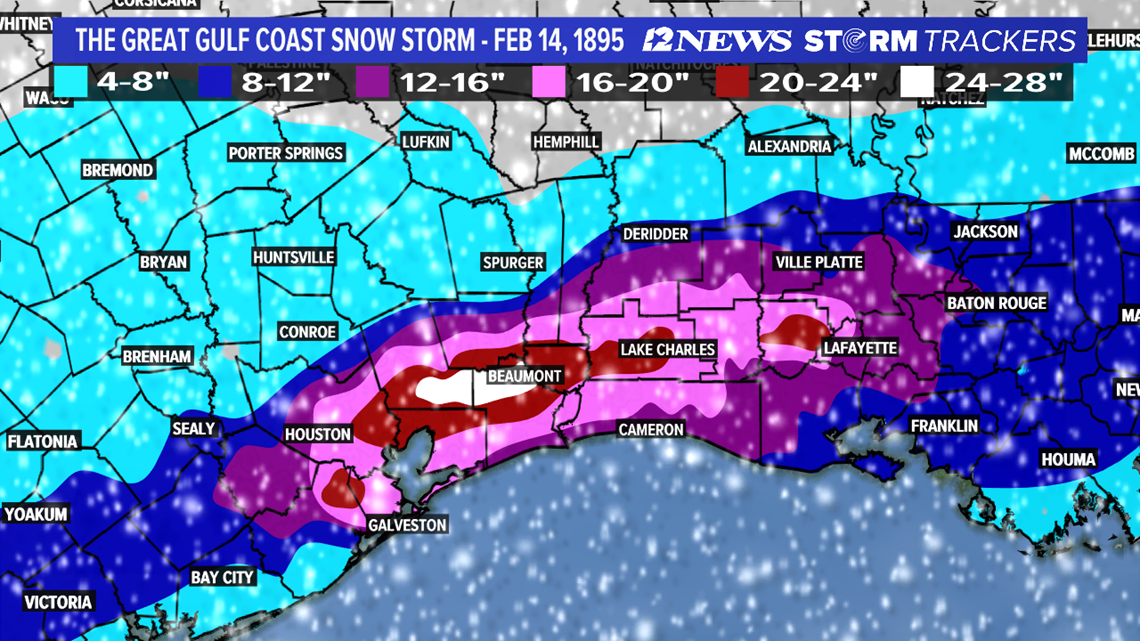
Snowfall amounts of 4 to 8 inches fell across the Lakes Area of SE Texas.
However, snowfall amounts of a foot to 2.5 feet fell across the Triangle, crippling travel.

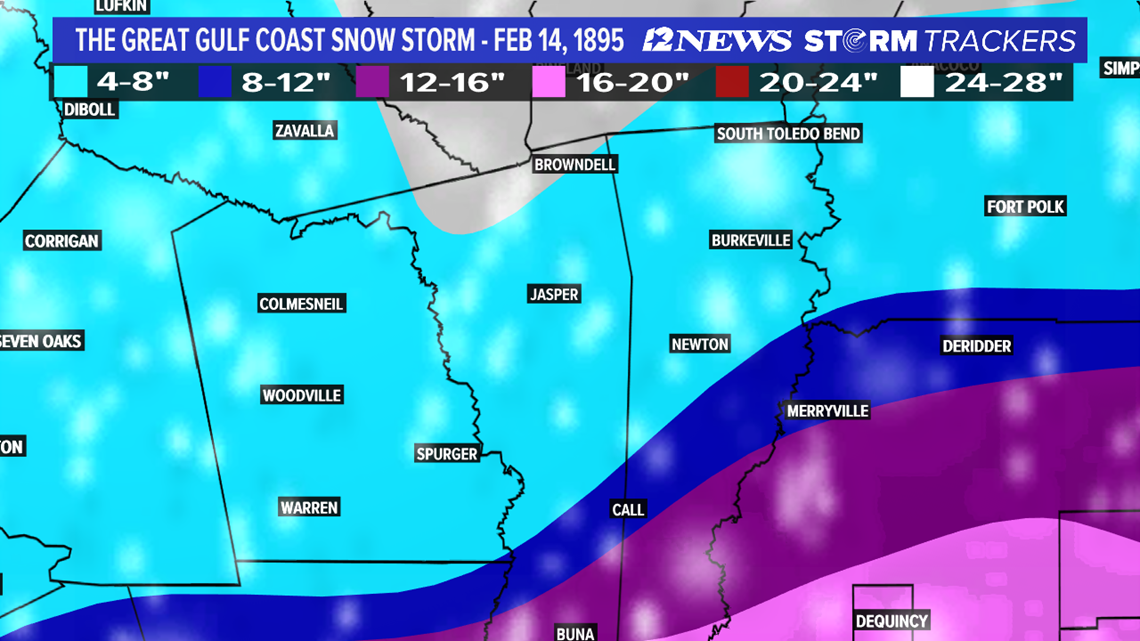
Area snowfall totals across Southeast Texas and Louisiana varied from 4 inches to nearly 30 inches of snowfall.
Even New Orleans, LA reported 8 inches of snow which effectively shut down the city’s streetcar routes. Some Southeast Texans may not even be able to imagine over 15 inches on Galveston Island!

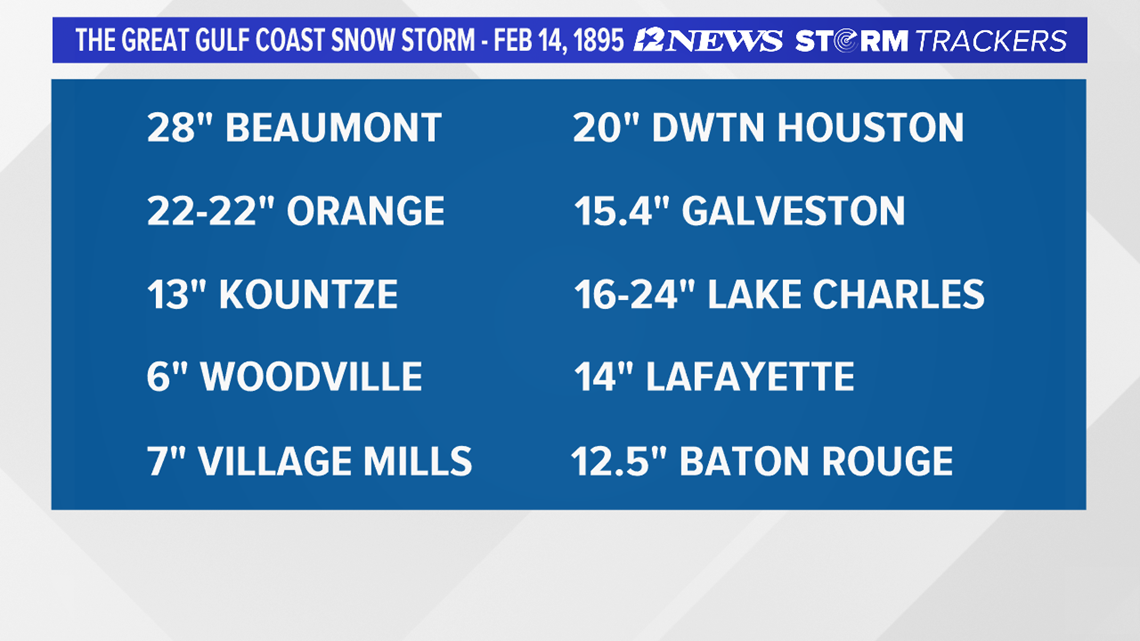
This resulted in significant cattle kill, with reports of them dying “in piles” in the streets of Beaumont. At times, only heads and horns could be seen because of the snow drifts of 6 feet!
The picture below shows cattle walking down the streets of Beaumont in the snow shot from the Jefferson County Courthouse. The image below is a courtesy photo from the Stephen F. Austin State University archives.

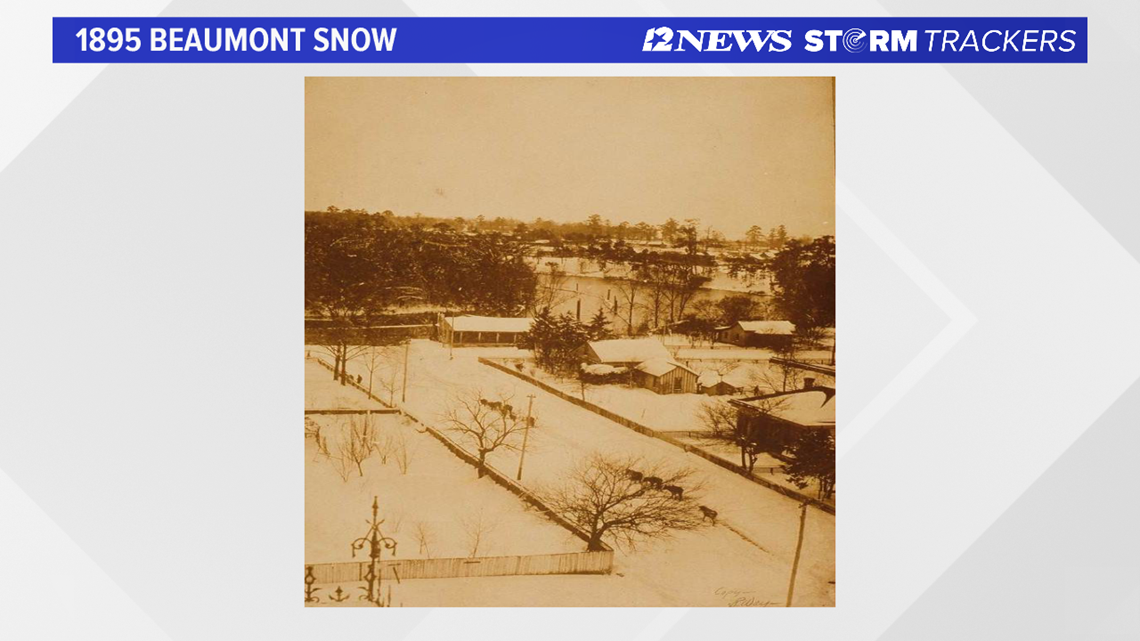
Limited pictures of the time reveal the historic snowfall amounts of 14 inches in Kountze.

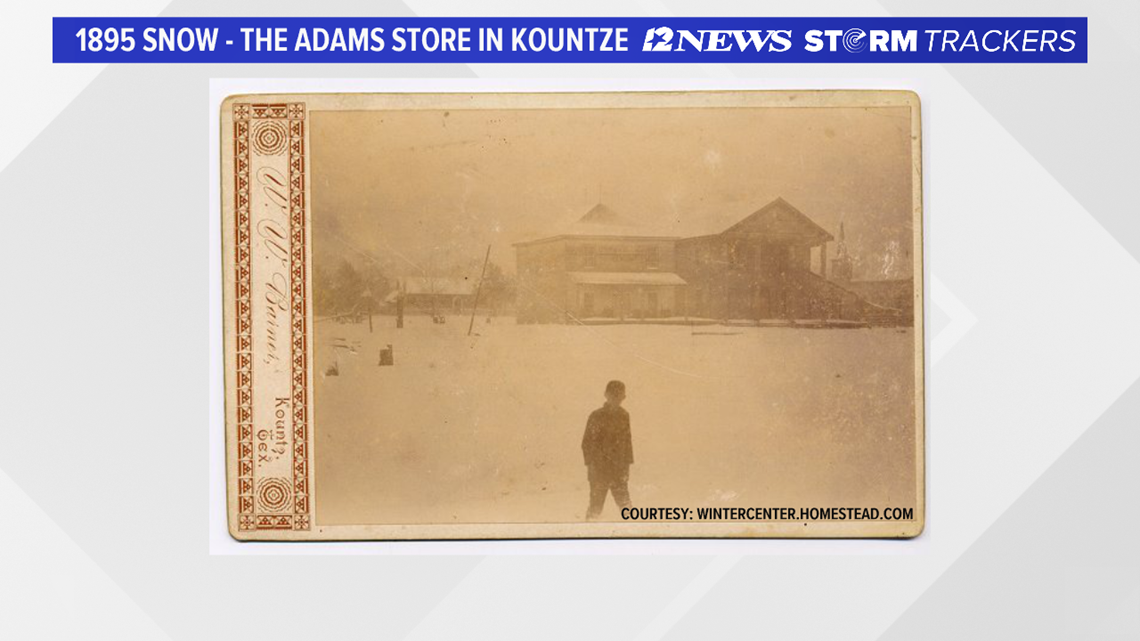
The snow stayed on the ground for ten days.
Just four years later almost to the day, the Great Arctic Outbreak stuck plunging the nation into one of the greatest cold spells in our nation’s history.


Southeast Texas was not immune. This event brought the coldest weather to our area ever recorded.
Temperatures fell to 8 degrees at Sabine Pass, 4 degrees at Beaumont and near zero in Jasper.

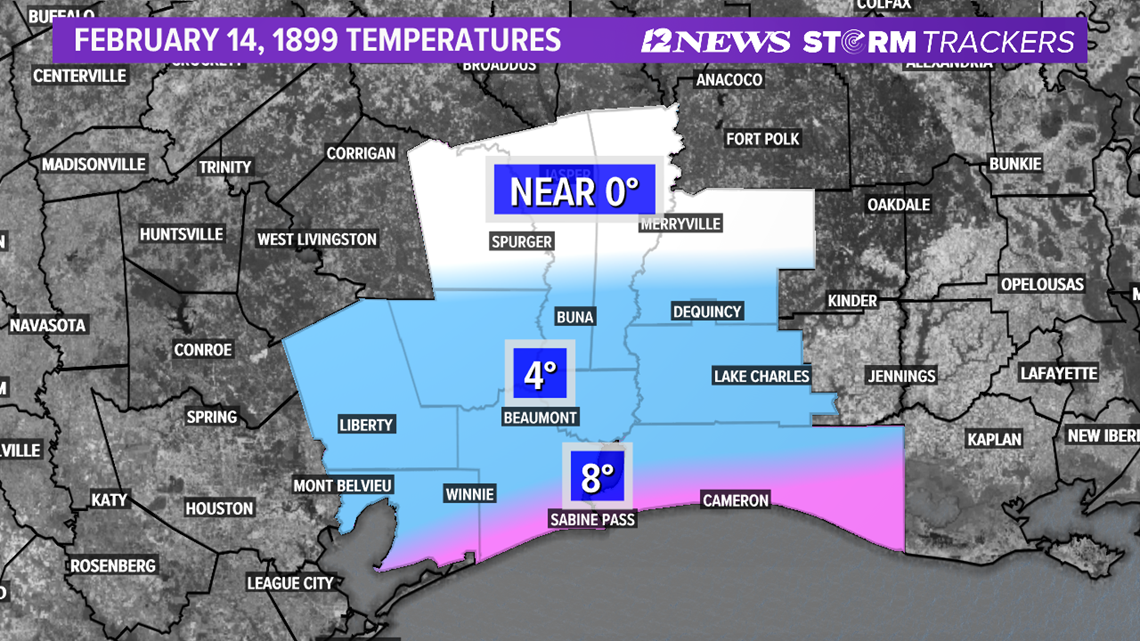
Temperatures of minus 20 were common in the Ohio River Valley, and an astonishing -61 degrees was recorded at Fort Logan, Montana!
Temperatures across Texas were extraordinarily cold. Dallas dropped to minus 10, Austin fell to minus 5, Galveston reached 8, Houston fell to 6, Longview fell to minus 7, but Tulia, TX was the coldest at minus 21 degrees. The cold was so widespread that the northern Mississippi River froze solid and when a thaw ensued, ice was seen flowing past New Orleans.
Locally, the newly-arrived Dutch immigrants from Nederland were seen ice skating on the Sabine Pass channel. Plus, speckled trout, stunned by the cold, were being shoveled into wagons at McFaddin Beach.
(Info courtesy the Beaumont, Enterprise-Journal, January 21, 1979, p. 9A by W.T. Block)
(Image courtesy http://wintercenter.homestead.com/photo1895.html photo by Larry Harris.)
(Image courtesy Stephen F. Austin State University.)

